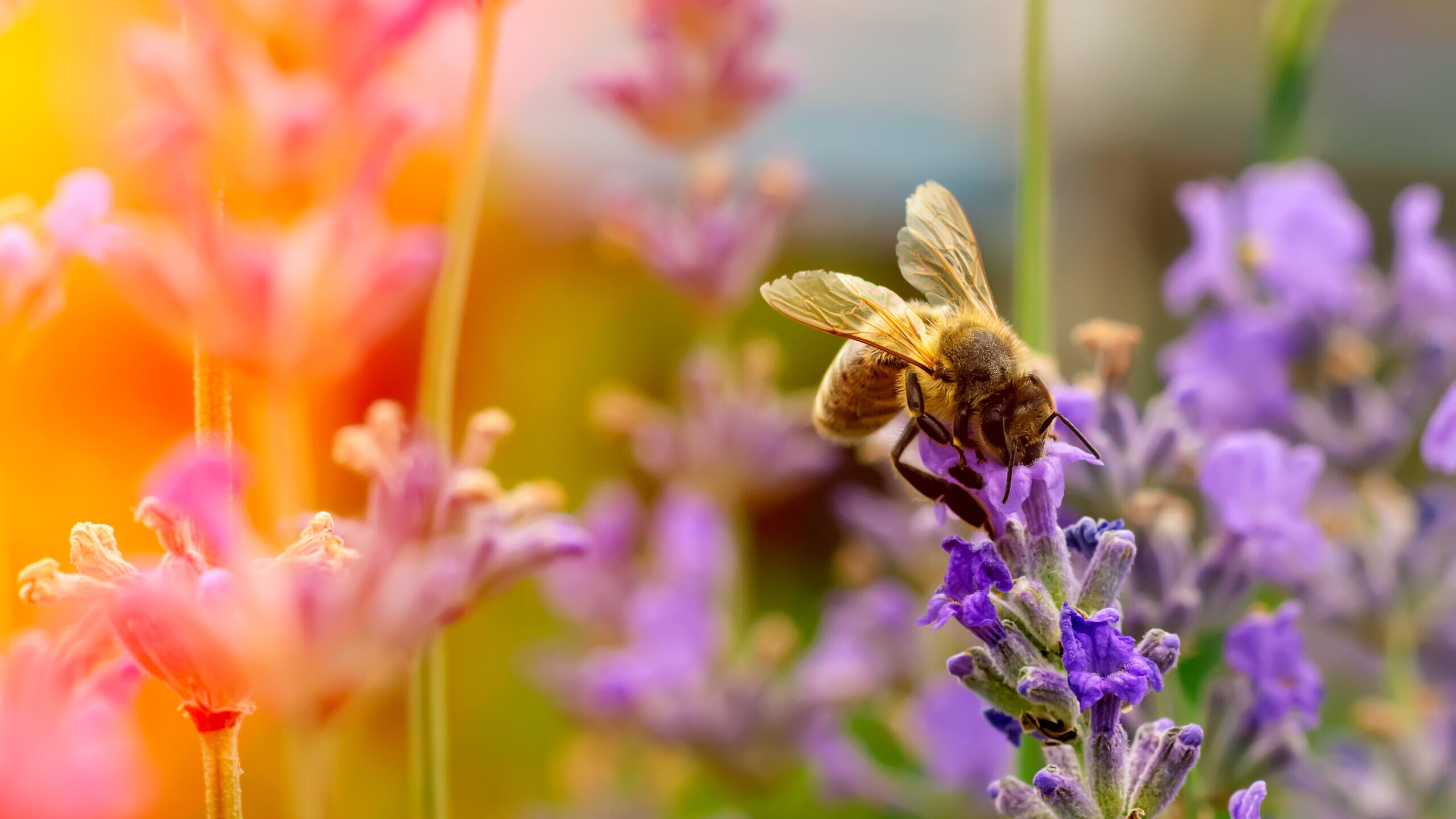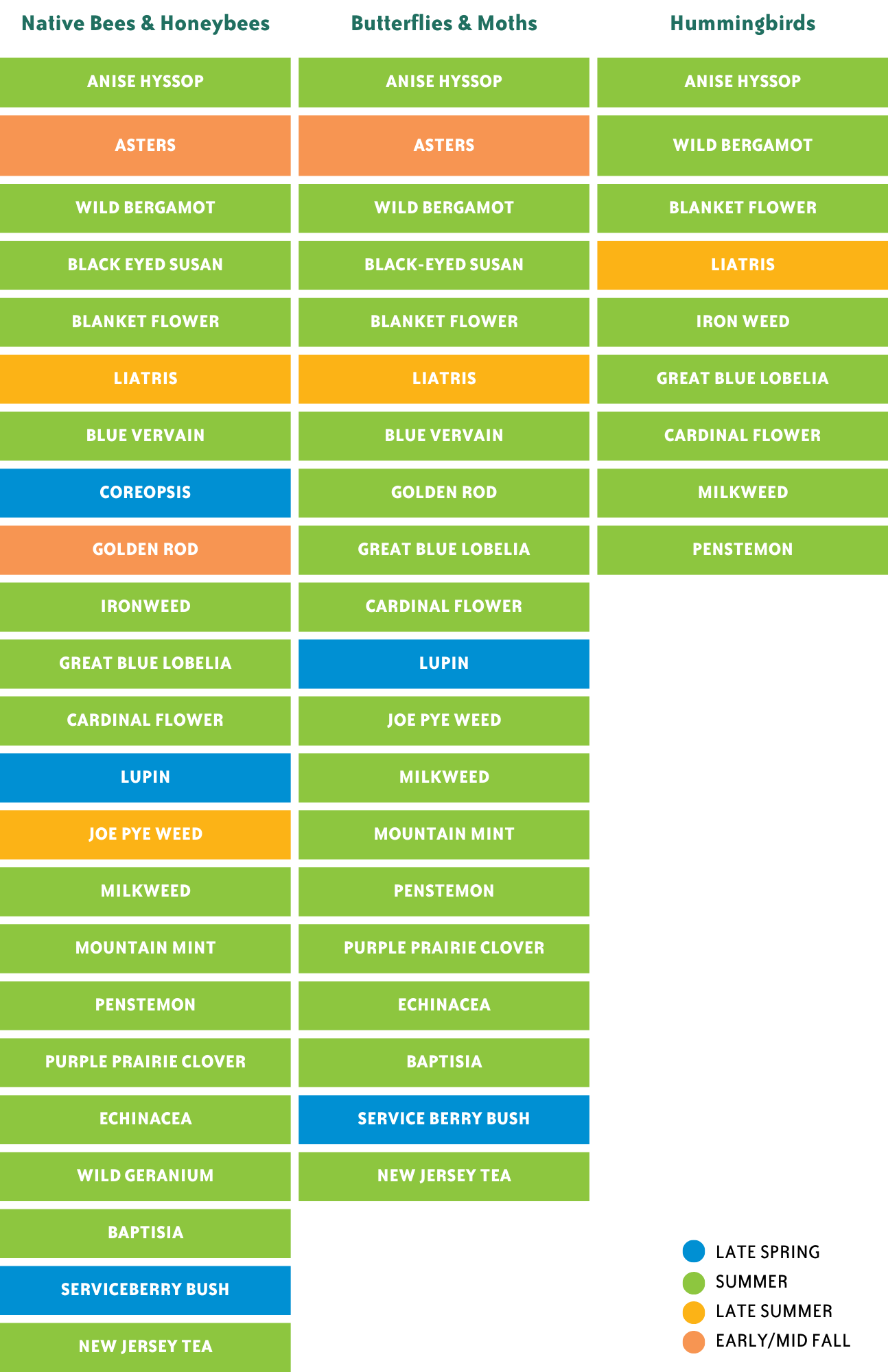
Who are the pollinators?
Native bees and honeybees, butterflies and moths, flies, wasps, beetles and hummingbirds.
Things to think about when planning your garden
- Native plant species are most attractive to pollinators. If you have a choice between a cultivar and a native variety, choose the native variety. The food and habitat they provide will always be better suited to the native pollinators’ needs.
- Choose a mix of shrubs and flowers with a variety of colors.
- Plants that will provide consecutive blooming throughout the growing season are optimal.
- Plant in clusters to provide a mass of color to attract pollinators.
- Plant host species — plants that will host the life cycle as well as plants that will provide food. For example, the Lupin is both a host and a nectar plant for the endangered Blue Kerner Butterfly. Swamp and Common Milkweed are a host plant for the Monarch, and Liatris is a favorite food source.
- Pollinators love the warmth of the sun, and most of the flowering natives that attract them are also sun-loving.
- Do not clean up your gardens in the fall — fallen leaves and plant stalks provide nesting material and winter shelter. Don’t clean up your garden in the spring until it is consistently 50°F, to give the pollinators a chance to come out of hibernation.
Pollinator-friendly plants at the co-op


